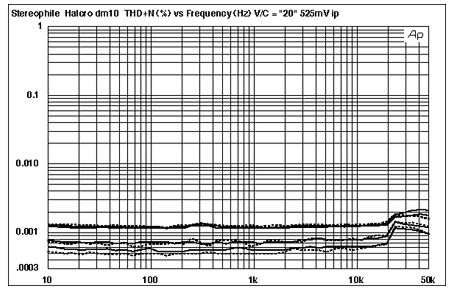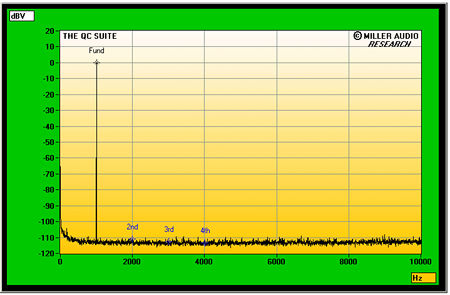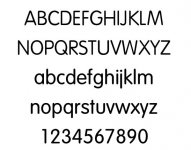Yes, 'different' must mean 'better' - provided 'different' cost enough money or is sufficiently wacky.
I never mentioned THD. It is not the amount of feedback which creates higher-order components, but the presence of feedback.popilin said:We agree as to the THD, but my point is about higher order components, which it is said, are the most annoying.
If the signal is delayed, then you have the original version to do whatever sensing you wish then apply the processing to the delayed version. Your error correction can be as complex as you can invent, perhaps involving detailed knowledge of the amplifier. This becomes a form of predistortion. Electronic engineers have known for decades that feedback is better than predistortion, so the latter is only used where NFB is not reasonably possible (such as RF PA).OK. Show me please a way to implement such a delay, without involving a trip to the past.
Semantic, yes, but I think it's of great pedagogical importance when exorcising the demons of audiophile legend.
You want room 12A, just down the corridor.
I never mentioned THD. It is not the amount of feedback which creates higher-order components, but the presence of feedback.
Ah, now I understand.
The mere presence of feedback creates higher order components.
The amount of feedback does not increse them.
Thanks ! Another misunderstanding corrected ! 🙂
I mentioned THD because when I try to reduce it, eg increasing NF, in most cases it's at expense of an increase of higher order components.
But I am not a good designer, I'm just a TV repairman. 😀
If the signal is delayed, then you have the original version to do whatever sensing you wish then apply the processing to the delayed version. Your error correction can be as complex as you can invent, perhaps involving detailed knowledge of the amplifier. This becomes a form of predistortion. Electronic engineers have known for decades that feedback is better than predistortion, so the latter is only used where NFB is not reasonably possible (such as RF PA).
If I understand correctly, we no longer speak about feedback, however, for more twists and turns to the argument, I always find a trip to the past.
Unless at some stage, the signal can travel faster than c.
In terms of relative delays, I must admit it's a very clever idea.
One always learns something new, thanks !
But do not take me so seriously, the reasons presented by all you, are dominant, mine, only gives to me better sleep. 😀
Hello !
I swear I am not a troll ... but I have another very very general and maybe foolish question
I have come to the conclusion the top measuments are achievable only with more complex topologies
If this is true I can understand that , at least for this kind of aim, minimalist circuits are not up to the task
I am referring to standard measurements, like distortion measurements in particular
But ... is this true ?
Or instead very top performances are achievable even with very simple topologies ?
Thanks a lot !
gino
I swear I am not a troll ... but I have another very very general and maybe foolish question
I have come to the conclusion the top measuments are achievable only with more complex topologies
If this is true I can understand that , at least for this kind of aim, minimalist circuits are not up to the task
I am referring to standard measurements, like distortion measurements in particular
But ... is this true ?
Or instead very top performances are achievable even with very simple topologies ?
Thanks a lot !
gino
Define "top measurements" and "top performances." I'm not being facetious, there's a lot of uncertainty in those terms.
Define "top measurements" and "top performances." I'm not being facetious, there's a lot of uncertainty in those terms.
Hello !
I was thinking at something like this

and this

top scores in traditional measurements I mean
They seem to be out of the reach of the simplest topologies, not only with tube but also with solid state
I consider op-amp complex ... of course. With a bjts count of tenth of transistors they cannot be considered simple
Thanks a lot
Regards,
gino
Minimalism can have its own rewards.
As I sit here at work - within arms reach I have 3 Windoze laptops, this Mac, an 8 input 2 output HD digital video switcher, a very expensive HD video server, 2 media servers, a digital audio board, LED video wall driver, digital video projectors, wireless mics, etc. There's gigahertz and bits flying everywhere. Probably several billion transistors.
When I go home I can sit down, have drink and listen to music coming from vinyl, a few old tubes and maybe a transistor or two routed to 1940s tech speakers. It's simple(ish) and satisfying. How simple can I make it and still get lovely sound out? It has its own rewards. 🙂
As I sit here at work - within arms reach I have 3 Windoze laptops, this Mac, an 8 input 2 output HD digital video switcher, a very expensive HD video server, 2 media servers, a digital audio board, LED video wall driver, digital video projectors, wireless mics, etc. There's gigahertz and bits flying everywhere. Probably several billion transistors.
When I go home I can sit down, have drink and listen to music coming from vinyl, a few old tubes and maybe a transistor or two routed to 1940s tech speakers. It's simple(ish) and satisfying. How simple can I make it and still get lovely sound out? It has its own rewards. 🙂
So you're defining "top measurement" and "top performance" as being 0.001% or lower THD? What's the magic of that number? If that's the case, yes, you need relatively complex circuits to achieve that. If you can stand 0.003%, my two tube preamp can certainly do that at these low output levels.
Either way, we're talking about distortion levels way below anything that's ever been shown to be audible.
Either way, we're talking about distortion levels way below anything that's ever been shown to be audible.
So you're defining "top measurement" and "top performance" as being 0.001% or lower THD?
What's the magic of that number? If that's the case, yes, you need relatively complex circuits to achieve that.
If you can stand 0.003%, my two tube preamp can certainly do that at these low output levels.
Either way, we're talking about distortion levels way below anything that's ever been shown to be audible
Hello ! well ... you can also see an exceptionally low noise
honestly apart square waves I cannot think of other measurements
Are there any others ?
I am following the related 3D with great interest by the way
Thanks and regards,
gino
Last edited:
Steve, will this do? thought I had something extremely similar (I still collect fonts, though not so much these days) I only keep ~1000 nice and complete fonts, with good kerning (trimmed from ~4000 a few years ago, you get to collect quite a few working in a pre-press bureau).
this one is called vagabond
this one is called vagabond
Attachments
a bit yes and the M is not straight up and down like Steve's. I have another one thats closer around, but pretty sure it was part of a bunch that became corrupted. not a truetype fan myself, found at least back years ago that they caused more postscript errors than type 1. Steves is a bit similar to a Helvetica Rounded light that I had too, but I cant find that either right now.
An externally hosted image should be here but it was not working when we last tested it.
I think we're all minimalists when it comes to the crunch.
Let's imagine for a moment an unlikely scenario where I'm called upon to choose between 2 circuits, one with one transistor and 3 resistors, the other with 2 transistors and 6 resistors, but which, by some quirk of fate, sound the same, measure identically, cost the same, occupy the same board real estate, have the same power consumption, the same MTBF and to all intents and purposes are indistinguishable other than by component count.
I'm going to pick the one with 1 transistor and 3 resistors. Of course I could toss a coin, but I don't have any inner preference for the 2 transistor 6 resistor circuit. I don't have a little voice telling me 'more complex is better', and I do have Occam's razor, and a scientific background that historically insists that less complex adequate explanations are preferred over more complex adequate ones, and it seems to me that this applies by extension to this scenario, but even this feeling is not so strong that if somebody else suggested tossing a coin, I would strenuously object.
Now. Change one thing. Make the 2 transistor circuit cheaper than the 1 transistor one, and immediately I'm going to choose that one.
This is just one factor that trumps minimalism.
Component count or complexity is the last thing anyone should be paying attention to in the context of circuit design or selection. Elevating it to a principal consideration just means that other aspects of performance will not be given due consideration, regardless of whether you are an objectivist or subjectivist, although I'd happily take a bet that there are more minimalist subjectivists than there are minimalist objectivists.
count cult
Keeping it rational since 1951
Group hug anyone?
Let's imagine for a moment an unlikely scenario where I'm called upon to choose between 2 circuits, one with one transistor and 3 resistors, the other with 2 transistors and 6 resistors, but which, by some quirk of fate, sound the same, measure identically, cost the same, occupy the same board real estate, have the same power consumption, the same MTBF and to all intents and purposes are indistinguishable other than by component count.
I'm going to pick the one with 1 transistor and 3 resistors. Of course I could toss a coin, but I don't have any inner preference for the 2 transistor 6 resistor circuit. I don't have a little voice telling me 'more complex is better', and I do have Occam's razor, and a scientific background that historically insists that less complex adequate explanations are preferred over more complex adequate ones, and it seems to me that this applies by extension to this scenario, but even this feeling is not so strong that if somebody else suggested tossing a coin, I would strenuously object.
Now. Change one thing. Make the 2 transistor circuit cheaper than the 1 transistor one, and immediately I'm going to choose that one.
This is just one factor that trumps minimalism.
Component count or complexity is the last thing anyone should be paying attention to in the context of circuit design or selection. Elevating it to a principal consideration just means that other aspects of performance will not be given due consideration, regardless of whether you are an objectivist or subjectivist, although I'd happily take a bet that there are more minimalist subjectivists than there are minimalist objectivists.
count cult
Keeping it rational since 1951
Group hug anyone?
Last edited:
Steve, will this do? thought I had something extremely similar (I still collect fonts, though not so much these days) I only keep ~1000 nice and complete fonts, with good kerning (trimmed from ~4000 a few years ago, you get to collect quite a few working in a pre-press bureau).
Yeah, Vagabond Round is among those I came across in my search. But nothing else has to "do" because now I've got EXACTLY what I wanted. 😀
And here's an example of what I was wanting originally:
An externally hosted image should be here but it was not working when we last tested it.
se
That's funny because it's counter intuitive to many people. Opamps are often represented as simple building blocks of gain that are easy to just plug in. Tubes are more mysterious, use high and low voltages, are temperamental and are from a mystic past.
how about opamps which are unstable at unity gain?
these "simple building blocks" can be unpredictable sometimes😀
Yeah, Vagabond Round is among those I came across in my search. But nothing else has to "do" because now I've got EXACTLY what I wanted. 😀
And here's an example of what I was wanting originally:
se
I guess you have a different tolerance for pain than I do. not having a font that can be typed with all the correct spacing and kerning correctly and instead having to what.... place the vector paths by hand letter by letter? is not what I would call job done 😀
unfortunately my copy of fontographer is old and wont work on my Mac (its from before OSX), or I would offer to do the font for you. I have some experience creating and editing custom Type 1 fonts back in the day, but not for years.
Last edited:
well ...simple simple they are not

But presumably the designers didn't make it so complex for fun.
how about opamps which are unstable at unity gain?
these "simple building blocks" can be unpredictable sometimes😀
hmm, not if you read the datasheet 😉 unity gain stability is a pretty standard spec
- Status
- Not open for further replies.
- Home
- Member Areas
- The Lounge
- Why "minimalism" is not popular ?
